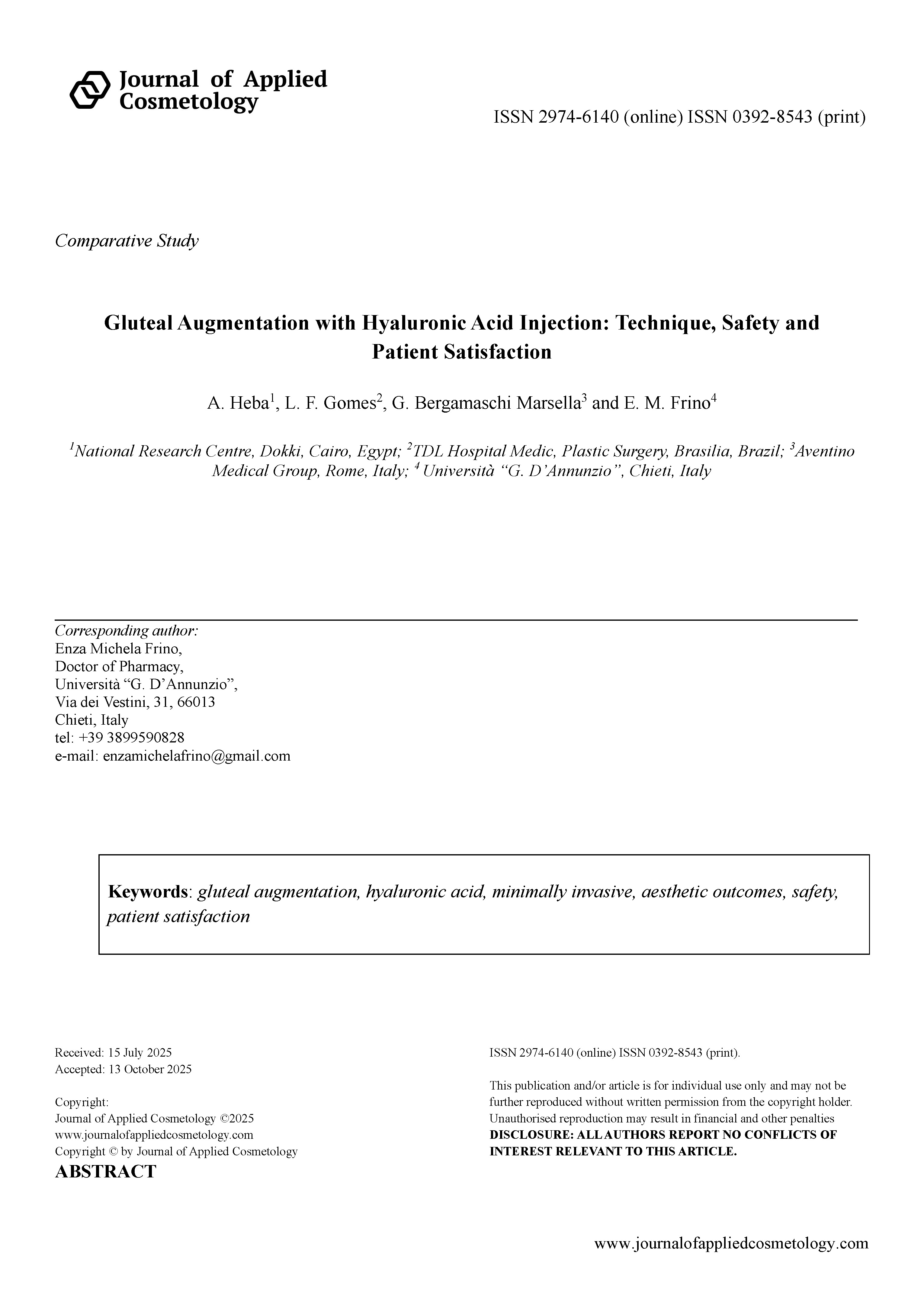Gluteal Augmentation with Hyaluronic Acid Injection: Technique, Safety and Patient Satisfaction
Abstract
The modern aesthetic ideal emphasizes a defined waistline, sculpted curves, and a voluminous, lifted buttock, making the gluteal region a key focus in cosmetic medicine. Among the available options, hyaluronic acid (HA) fillers have emerged as a safe, minimally invasive, and reversible alternative to surgical methods such as gluteal implants or fat grafting, which are associated with higher complication rates and longer recovery times. This prospective study evaluates the efficacy, safety, and patient satisfaction of gluteal augmentation using a standardized protocol of HA filler injections. A total of 40 female patients, aged between 28 and 45 years and with a body mass index (BMI) between 18 and 25 kg/m2, were treated using blunt-tip cannulas and medium molecular weight HA injected into the deep subcutaneous layer. Injection planning was based on individualized anthropometric analysis and precise anatomical landmarking. The procedure was performed in a certified clinical setting under sterile conditions and with appropriate anesthetic support. The results demonstrated immediate and natural-looking volume enhancement, with excellent tissue integration and aesthetic improvement lasting up to 12 months. Patient satisfaction was notably high, with 95% of participants reporting being satisfied or very satisfied with the outcome in terms of shape, symmetry, and projection. Follow-up assessments at 7 to 14 days and again at 3 to 6 months confirmed stable results and sustained satisfaction. Adverse effects were limited to mild and transient events such as bruising, pain, and swelling, without any cases of serious complications, allergic reactions, or the need for enzymatic reversal. The HA formulation used in this study is Privilege Body- 10 ml syringe format, which represents a new generation of body fillers, specifically designed to combine the volumizing properties of high molecular weight HA with the cohesiveness and reversibility of lower molecular weight formulations. Unlike permanent fillers, such as silicone or acrylic materials, now banned due to the risk of granulomas, migration, and infections, this medium molecular weight HA is fully biodegradable and can be safely dissolved with hyaluronidase in case of need. These characteristics make it particularly suitable for large-volume, high-precision applications like gluteal remodeling. In conclusion, hyaluronic acid-based gluteal augmentation is a viable, effective, and safe option for selected patients seeking moderate body enhancement without the risks or downtime associated with surgery. The key to success lies in careful patient selection, a solid understanding of gluteal anatomy, and adherence to a standardized technique. While the cost of HA may be higher than fat grafting, its predictability, minimal invasiveness, and favorable safety profile make it a valuable tool in the expanding field of non-surgical body contouring. Future comparative and long-term studies will be essential to further validate and refine this approach.
Downloads









